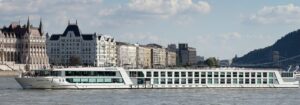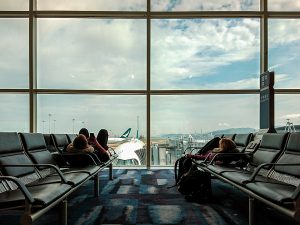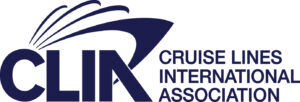10 Changes to Cruising Due To COVID-19
At the time of writing, cruising is just beginning to come to life. On April 30, 2021, the Center for Disease Control in the U.S. announced that cruising will be able to recommence from U.S. ports in July of this year. This is very good news for both the cruise lines and cruisers alike! However, it has been nothing short of a battle for the cruise lines to get to this important milestone.
Governments and health organizations have mandated changes to the way cruising is operated, in order to mitigate the effects of COVID. Cruise lines around the world have responded to these demands by working tirelessly with countless health and safety experts in order to design new policies and protocols that will safely support the resumption of cruising on a global scale. These changes will affect the whole cruising experience in both the short, and long term.
Here, then, are 10 changes to cruising you will want to know about. Some will be temporary, and some will be permanent, and I’ll tell you which are which!
1. Health Screening
Until now, there has never been any significant medical screening for passengers to determine their fitness to cruise. There will be big changes on that front going forward! Before a passenger (or crew) boards a ship, there will be a very involved screening process. Now cruise lines will be checking people’s temperatures, completing a questionnaire at the terminal, and checking any documents (such as proof of vaccination or negative COVID test) as part of check-in.
Some of these steps will be accomplished online, long before embarkation day. Prior to boarding, cruise line staff will confirm that everyone getting aboard the ship, passengers and crew alike, are healthy, and not displaying any symptoms associated with COVID. Even when passengers re-board the ship after port days, there will be screening steps such as touchless temperature checks. These procedures will be permanent, and may discourage or disqualify, some passengers going forward.
Cruise lines will have no choice but to be very strict. They cannot afford an outbreak which could bring a swift halt to their business plans and in some cases, could spell the end of the cruise line! Many are deeply indebted and must resume their operations quickly to survive. Cruise lines are under enormous pressure to demonstrate that they can conduct operations with a high degree of safety.
2. Staggered Check-In
With all of the pre-boarding screening in effect, check-in will take longer than before. In order to avoid passenger congestion in the terminals, cruise lines will implement staggered check-in times. Passengers will be given a time to arrive for check-in and it will likely be strictly enforced. What will also likely occur is for the cruise lines to provide passengers the opportunity to book their own check-in times, prior to the day of sailing. Undoubtedly, passengers in balconies or suites, or passengers having higher reward status will be given priority. This measure will become permanent.
3. Vaccines
So far most, if not all, cruise lines have implemented mandatory vaccines for all adult passengers and crew. For children under the age of 18, proof of a negative COVID test must be provided. This will likely become a permanent measure. According to CDC guidelines issued April 30, 2021, all of the crew and 95% of passengers must be vaccinated in order for a ship to sail. The 5% allowance accommodates children who are unable to be vaccinated because of their age. In these cases, evidence of a recent (within 72 hours of boarding) negative COVID test for the child, must be presented at the time of boarding.
4. Masks
As cruising resumes on a global scale in 2021, masks will be mandatory in designated areas. Certainly, during check-in and boarding, masks will be required inside the terminal. Once on board, masks will be required in all indoor public spaces, with the exception of dining facilities when a person is actually in the process of eating. They will be optional in your cabin, and outdoors where physical distancing can be accomplished. This mandate will likely ease and eventually disappear once vaccinations become universal. Although as has been the case, mainly in some Asian cultures; I think that a lot of people will continue to wear masks, even when they are no longer required.
5. Safety Muster Drill
Here’s a bit of good news! The mandatory safety drill where everyone reports to their ‘muster station’ wearing a life vest for their in-person safety briefing has been re-imagined. It is impossible to social distance during one of these drills so future cruises will have virtual drills in place. Passengers will have to watch a video briefing online (or on the TV in their room) and then receive a verification code at the end that they will have to use to prove they have watched the entire safety video. This will be a permanent change, but one for the better!
6. Technology Changes
Cruise lines have been evolving technology to enhance the customer experience for years now and it will only continue. All of the major cruise lines now have apps (for example: ‘Carnival Hub’, Disney’s ‘Navigator’) and without question, they will become far more dependent on them to interact with passengers. In response to the pandemic, it has become important to create a ‘touchless’ environment with technological innovation. Anyone who has cruised knows about the “Daily Programs” sheets your cabin steward would leave outside your cabin door each night detailing all of tomorrow’s activities on board. They will instead be available on your app, or on an info page on your TV.
Cruise lines will also be rolling out (many already have) proprietary devices such as Princess’s “Medallion” which are used to establish your virtual identity on the ship. Using these devices, which can come in the form of pendants or bracelets; you can open your cabin door, get directions to amenities on the ship, pay for a drink at the poolside bar, and so much more. You will also be able to determine where everyone in your travelling party is on the ship, because the devices include location services!
This of course will also facilitate ‘contact tracing’ which medical staff will use to help mitigate any outbreak of COVID. If someone gets sick, crew will be able to know who else was in close proximity to that individual so they can be tested and monitored. These devices and the ‘touchless’ environment onboard are definitely here to stay!
7. Excursions
As of now, shore excursions will only be allowed in the form of cruise line curated trips. That means no one will be allowed to leave the ship unless part of an official group, escorted by cruise line staff. This policy is in response to demand from host countries and port authorities who want to be able to control the number of passengers that get off a ship and where they go. However, most of the larger lines have their own private islands in the Caribbean so these will be popular stops! In my opinion, the nature of excursions will also have to change. Some passengers just want to go for a walk or go shopping in and around the port city, and these desires should be accommodated by providing escorts. Restricting shore excursions will be temporary. Tourism is a very important source of revenue for a lot of countries and as safety allows, restrictions will diminish.
8. Buffets
Even prior to the pandemic, cruise lines were starting to move away from self-serve buffets. Now; this change will be mandatory right across the industry. This will require a pretty significant increase in serving staff but will keep things safer and cleaner. Without a doubt this is a permanent change!
9. Reduced Capacity
For the foreseeable future, ships must operate at reduced capacities in order to allow for physical distancing. Ships are sailing with 50-70% capacity. This will naturally increase once physical distancing requirements are reduced. I think it’s important to note that with the need for more serving staff, as well as additional staff for cleaning and sanitizing, some of the lower end cabins will have to be converted into crew berths. This will mean a permanent reduction in passenger capacity, and will likely lead to higher fares in the long term.
10. Venues
For now, venues such as nightclubs and saunas will be closed. It would be impossible to physical distance in these venues. Theatres, and specialty dining rooms will also be restricted to the number of patrons that can enjoy them. For live entertainment, it may be necessary to schedule additional performances each day so that everyone has a reasonable opportunity to attend a show. Over time, these restrictions will be lifted but the timeframe is anyone’s guess.
summary
Cruising is changing forever folks. There is no way around it. A lot of the changes will be temporary until COVID-19 is completely under control, but many are here to stay. For the most part, I feel as if it’s only the temporary measures that will negatively affect the onboard experience. All of the permanent changes (other than rising fares!) will just become part of the new norm, and some actually enhance the experience. If nothing else, the cruise industry has shown itself to be very adaptable, and because it is such a competitive industry, they are obsessed with providing the very best experience for the money. Long term, cruising will recover and become even safer than before, and no less enjoyable!
Any questions or concerns, feel free to contact me at jim@jameshilltravel.com.
Your Memories Await! ™









